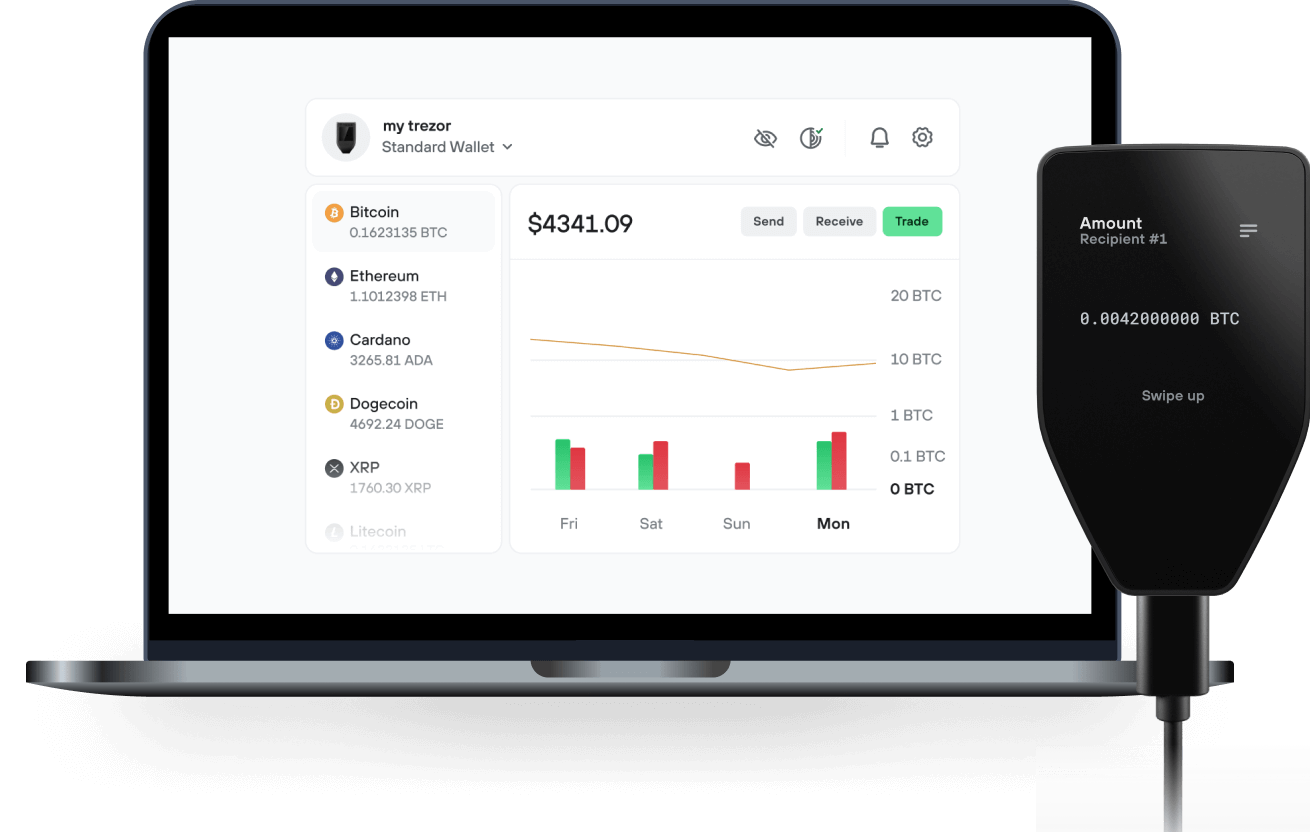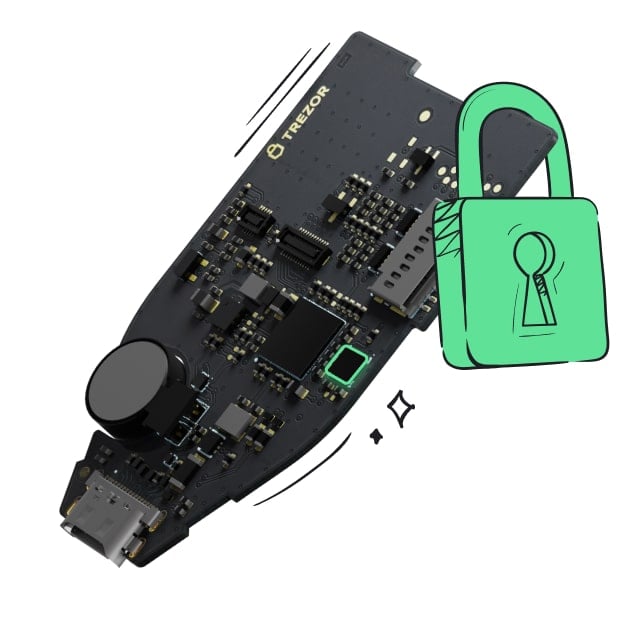Safe & secure Libra Credit wallet
Take control of your Libra Credit assets with complete confidence in the Trezor ecosystem.
- Secured by your hardware wallet
- Use with compatible hot wallets
- Trusted by over 2 million customers

Send & receive your Libra Credit with the Trezor Suite app

Send & receive
Trezor hardware wallets that support Libra Credit
Sync your Trezor with wallet apps
Manage your Libra Credit with your Trezor hardware wallet synced with several wallet apps.
Trezor Suite
MetaMask
Rabby
Supported Libra Credit Network
- Ethereum
Why a hardware wallet?
Go offline with Trezor
- You own 100% of your coins
- Your wallet is 100% safe offline
- Your data is 100% anonymous
- Your coins aren’t tied to any company
Online exchanges
- If an exchange fails, you lose your coins
- Exchanges are targets for hackers
- Your personal data may be exposed
- You don’t truly own your coins
How to LBA on Trezor
Connect your Trezor
Open a third-party wallet app
Manage your assets
Make the most of your LBA
Trezor keeps your LBA secure
 Protected by Secure Element
Protected by Secure ElementThe best defense against both online and offline threats
 Your tokens, your control
Your tokens, your controlAbsolute control of every transaction with on-device confirmation
 Security starts with open-source
Security starts with open-sourceTransparent wallet design makes your Trezor better and safer
 Clear & simple wallet backup
Clear & simple wallet backupRecover access to your digital assets with a new backup standard
 Confidence from day one
Confidence from day onePackaging & device security seals protect your Trezor’s integrity
Libra Credit is a decentralized lending ecosystem that facilitates open access to credit anywhere and anytime based on the Ethereum blockchain. Libra Credit is a global initiative with a mission to provide financial inclusion and lower the cost of financial services. Powered by its proprietary big data, AI-based credit assessment technology and existing global partnership networks, Libra Credit has the expertise and capabilities to realize its mission. Libra Credit aims to offer a seamless digital lending process that can be completed in 5 steps: application, verification and credit assessment, confirmation, collateral deposit, and disbursement. The Libra Credit platform will focus on a dual-credit risk scoring mechanism that considers the creditworthiness of the pledged collateral as well as the credit information of the borrower. Borrowers will be able to pledge any crypto-assets as collateral and receive loans in their desired asset. Using smart contracts and a proprietary collateral valuation and liquidation system, Libra Credit will lock in agreed terms between borrows, lenders, custodians, guarantors and liquidators.
Libra Credit was founded in 2017 and operates out of San Francisco, USA. They are backed by investors such as FBG Capital, GBIC, DHVC, Dekypt Capital, Crypto Parency, and others. Lu Hua, Co-Founder & CEO has experience in the payments, financing, and risk management industries. He was previously the CEO of moKredit, one of China’s top digital credit servicing companies. Lu was also the Head of Core Payments for PayPal China and the Head of Global Banking Platform for PayPal US. Dan Schatt, Co-Founder & COO has previously worked as the Chief Commercial Officer at Stockpile Inc., a leading fintech company, and as General Manager of Financial Innovations at PayPal. Howard Wu, Chief Scientist, he is a blockchain and cryptography expert who is a Founding Partner of Dekrypt Capital, Advisor of Blockchain at Berkeley, and Software Engineer at Google. He advises the project in a technical capacity and has received a Master’s degree in Electrical Engineering and Computer Sciences from UC Berkeley.
There are already quite a few blockchain lending projects, so competition is stiff. Libra Credit’s development progress is rather early compared to its competitors. The crypto-to-crypto lending part seems to be well thought out. However, not so much with the crypto-to-fiat part. According to the roadmap, crypto-to-fiat lending is scheduled to launch in 2018 Q3. With details lacking in the weekly blog update about crypto-to-fiat lending, it is difficult to gauge whether the proposed timeline is reasonable.